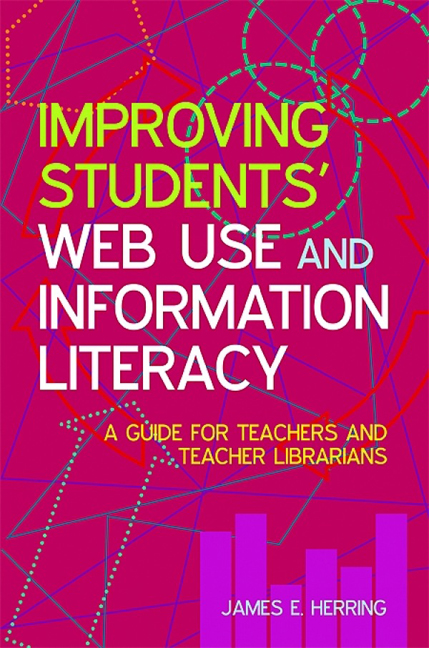Book contents
- Frontmatter
- Dedication
- Contents
- Acknowledgements
- Introduction
- 1 The big picture: learning and teaching in today's schools
- 2 Finding and using information on the web
- 3 Evaluating websites
- 4 Web 2.0 and schools
- 5 Information literacy
- 6 Improving student use of the web
- 7 Developing learning websites for student use - design and tools
- 8 Developing learning websites for student use - content
- 9 The next phase of ICT in schools
- Bibliography
- Index
4 - Web 2.0 and schools
Published online by Cambridge University Press: 08 June 2018
- Frontmatter
- Dedication
- Contents
- Acknowledgements
- Introduction
- 1 The big picture: learning and teaching in today's schools
- 2 Finding and using information on the web
- 3 Evaluating websites
- 4 Web 2.0 and schools
- 5 Information literacy
- 6 Improving student use of the web
- 7 Developing learning websites for student use - design and tools
- 8 Developing learning websites for student use - content
- 9 The next phase of ICT in schools
- Bibliography
- Index
Summary
Introduction
There have been many new developments on the web in the past five years, the most important of which is the development of Web 2.0, which has provided teachers and teacher librarians with a range of new concepts, ideas and tools to use in their schools. Web 2.0 has also transformed the way school students communicate with each other, and create, find and exchange information in text and visual formats inside and outside school. There has been a revolution in the way the web is used, with teachers, teacher librarians and students no longer being passive users of the web. Instead, they have become active creators of information and active respondents to information provided by others.
In the school context the existence of Web 2.0 does not guarantee that students will automatically become more effective learners or that teachers will become more effective educators. Web 2.0, in the form of blogs, wikis and other applications, has to be used as a tool that creates opportunities for learning or enhances teaching. For example, teachers who use wikis to list unannotated websites or to display the contents of handouts previously given in print are not making creative use of Web 2.0. Thus Web 2.0 needs to be seen in the learning and teaching context of the school. This chapter will examine what Web 2.0 is, and specific tools including blogs, wikis, social bookmarking, photo sharing and social networking.
What is Web 2.0?
O'Connell argues that ‘Web 2.0 is fundamentally participative, and is about sharing code, content and ideas. It is about communication and facilitating community’ (2006, 46). Web 2.0 refers to a new stage of development in the world wide web. Whereas the web was formerly mainly static and noninteractive, and most websites were created by businesses, universities and research institutions, Web 2.0 is seen as dynamic, interactive and much of the web activity is about sharing information and ideas. Also, new web tools such as wikis (see below) make it much easier for many more people to create web content.
- Type
- Chapter
- Information
- Improving Students' Web Use and Information LiteracyA Guide for Teachers and Teacher Librarians, pp. 47 - 60Publisher: FacetPrint publication year: 2010



